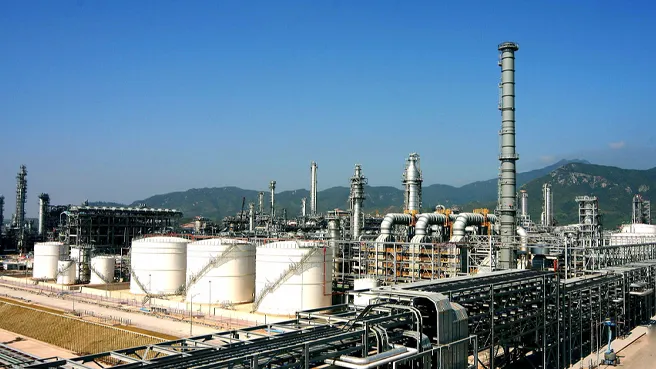
styrene and butadiene
Styrene and Butadiene Essential Building Blocks in the Polymer Industry
Styrene and butadiene are two key monomers that play a vital role in the production of various synthetic rubbers and plastics, particularly styrene-butadiene rubber (SBR) and polystyrene (PS). These materials have become indispensable in countless applications, from automotive components and consumer goods to packaging and construction. The unique properties of both styrene and butadiene contribute to their significance in the polymer industry, allowing manufacturers to create versatile and high-performance products.
Styrene, a colorless liquid derived from petroleum, is an aromatic hydrocarbon with the chemical formula C8H8. Its structure contains a vinyl group, which enables its polymerization, making it a crucial monomer in the synthesis of polystyrene. Polystyrene is one of the most widely used plastics in the world, known for its rigidity, clarity, and ease of processing. It is utilized in a myriad of products, including disposable cutlery, packaging materials, insulation, and even in the production of high-impact polystyrene (HIPS), which combines durability with aesthetic appeal.
Butadiene, on the other hand, is a colorless gas belonging to the class of alkenes with the chemical formula C4H6. It is also derived from petroleum and is primarily produced through the steam cracking of hydrocarbons. Butadiene's unique structure, featuring two double bonds, facilitates its polymerization to form synthetic rubber. The most significant application of butadiene is in the production of styrene-butadiene rubber (SBR), which accounts for approximately 60% of the rubber used in the tire industry.
styrene and butadiene

The combination of styrene and butadiene in SBR results in a material that exhibits excellent abrasion resistance, toughness, and aging stability, making it ideal for tire treads and various automotive applications. Additionally, SBR is widely used in shoe soles, conveyor belts, and numerous industrial products due to its cost-effectiveness and versatility. The flexibility of SBR allows it to be used across a broad temperature range, ensuring reliable performance in diverse environments.
Furthermore, the synthesis of styrene and butadiene is closely linked to the petrochemical industry. The production processes not only involve the extraction and refining of crude oil but also leverage advancements in catalytic technologies to enhance efficiency and reduce environmental impact. In recent years, there has been a significant push towards sustainable practices in the production of these monomers, with innovations in bio-based feedstocks and recycling technologies gaining traction within the industry.
As the global demand for synthetic rubber and plastics continues to rise, the future of styrene and butadiene looks promising. Ongoing research in materials science aims to develop smarter, more sustainable formulations that can meet the challenges posed by climate change and resource scarcity. Innovations such as thermoplastic elastomers, which combine the properties of rubber with the processability of plastics, are being explored to create more efficient and eco-friendly materials.
In conclusion, styrene and butadiene are integral components of modern material science, fueling advancements in the production of synthetic rubber and plastics. Their unique properties and diverse applications make them essential in various industries, particularly automotive and consumer goods. As the focus on sustainability intensifies, the evolution of these monomers will undoubtedly reflect the industry's commitment to producing high-performance materials while minimizing environmental impact. The ongoing developments in styrene and butadiene will be instrumental in shaping the future of the polymer industry, providing innovative solutions for a sustainable tomorrow.
-
Pure Sodium Dichloroisocyanurate Dihydrate | Powerful DisinfectantNewsAug.29,2025
-
Industrial Chemicals: Quality & Purity for Every IndustryNewsAug.28,2025
-
Nitrile Rubber Honoring Strict Production StandardsNewsAug.22,2025
-
Aspartame Ingredients Honoring Food Safety ValuesNewsAug.22,2025
-
Fertilizer for Balanced Plant NutritionNewsAug.22,2025
-
Cyanide Gold Processing with High Purity AdditivesNewsAug.22,2025
-
Formic Acid in Textile Dyeing ApplicationsNewsAug.22,2025
Hebei Tenger Chemical Technology Co., Ltd. focuses on the chemical industry and is committed to the export service of chemical raw materials.
-

view more DiethanolisopropanolamineIn the ever-growing field of chemical solutions, diethanolisopropanolamine (DEIPA) stands out as a versatile and important compound. Due to its unique chemical structure and properties, DEIPA is of interest to various industries including construction, personal care, and agriculture. -

view more TriisopropanolamineTriisopropanolamine (TIPA) alkanol amine substance, is a kind of alcohol amine compound with amino and alcohol hydroxyl, and because of its molecules contains both amino and hydroxyl. -

view more Tetramethyl Thiuram DisulfideTetramethyl thiuram disulfide, also known as TMTD, is a white to light-yellow powder with a distinct sulfur-like odor. It is soluble in organic solvents such as benzene, acetone, and ethyl acetate, making it highly versatile for use in different formulations. TMTD is known for its excellent vulcanization acceleration properties, which makes it a key ingredient in the production of rubber products. Additionally, it acts as an effective fungicide and bactericide, making it valuable in agricultural applications. Its high purity and stability ensure consistent performance, making it a preferred choice for manufacturers across various industries.





